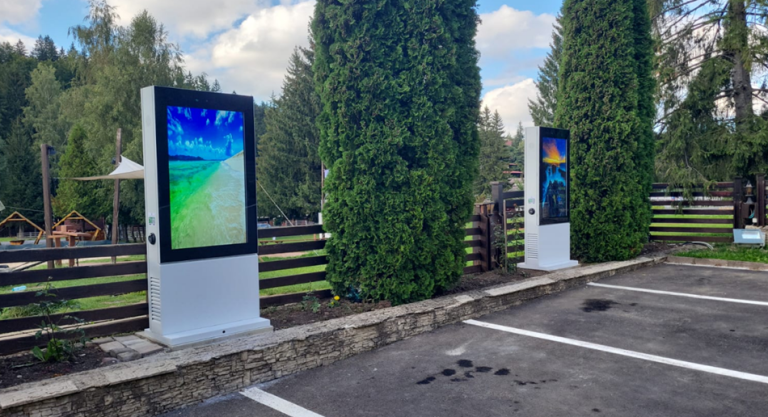Exploring the Versatile Use Cases of Outdoor Digital Kiosks
Exploring the Versatile Use Cases of Outdoor Digital Kiosks
Introduction:
Outdoor digital kiosks have revolutionized the way information and services are provided to the public in various outdoor environments. These interactive devices offer a wide range of applications that enhance user experience, increase engagement, and provide convenience. In this article, we will delve into the diverse use cases of outdoor digital kiosks, highlighting their role in wayfinding and navigation, interactive maps, event information, advertising and promotions, ticketing and reservations, and self-service options.
Wayfinding and Navigation:
Outdoor digital kiosks serve as effective wayfinding tools, providing visitors with interactive maps and directions. These kiosks can pinpoint a user's location and offer step-by-step guidance to their desired destination. Whether it's a complex shopping mall, a sprawling park, or a crowded city center, outdoor digital kiosks help users navigate with ease, saving time and reducing frustration.
Interactive Maps:
In addition to wayfinding, outdoor digital kiosks offer interactive maps that provide users with valuable information about the surrounding area. Users can explore points of interest, landmarks, amenities, and even nearby events or promotions. The maps can be zoomed in or out, allowing users to get a comprehensive view of their surroundings and make informed decisions about their next destination.
Event Information:
Outdoor digital kiosks are excellent platforms for disseminating event information. Whether it's a music festival, a sports event, or a community gathering, these kiosks can display event schedules, artist lineups, ticket availability, and venue maps. Users can browse through upcoming events, purchase tickets, and even receive real-time updates and notifications.
Advertising and Promotions:
Outdoor digital kiosks offer prime advertising space for businesses and organizations. With vibrant high-definition displays, these kiosks can showcase dynamic advertisements, promotional content, and special offers. By strategically placing kiosks in high-traffic areas, advertisers can effectively capture the attention of passersby and engage potential customers.
Ticketing and Reservations:
Outdoor digital kiosks provide convenient self-service options for ticketing and reservations. Users can purchase tickets for various modes of transportation, such as buses, trains, or ferries, directly from the kiosk. Additionally, users can make reservations for restaurants, hotels, or rental services, eliminating the need for lengthy queues or phone calls.
Self-Service Options:
Outdoor digital kiosks empower users with self-service capabilities. For instance, in retail environments, customers can browse product catalogs, check product availability, and even place orders from the kiosk. In public spaces, users can access information about nearby attractions, historical sites, or recreational activities. These self-service options enhance user autonomy and convenience.
Conclusion:
Outdoor digital kiosks have transformed the way information is accessed and services are delivered in outdoor environments. From wayfinding and navigation to interactive maps, event information, advertising and promotions, ticketing and reservations, and self-service options, these kiosks offer a plethora of applications that cater to the needs of users and businesses alike. As technology continues to advance, we can expect even more innovative use cases for outdoor digital kiosks, further enhancing user experiences and transforming public spaces.

